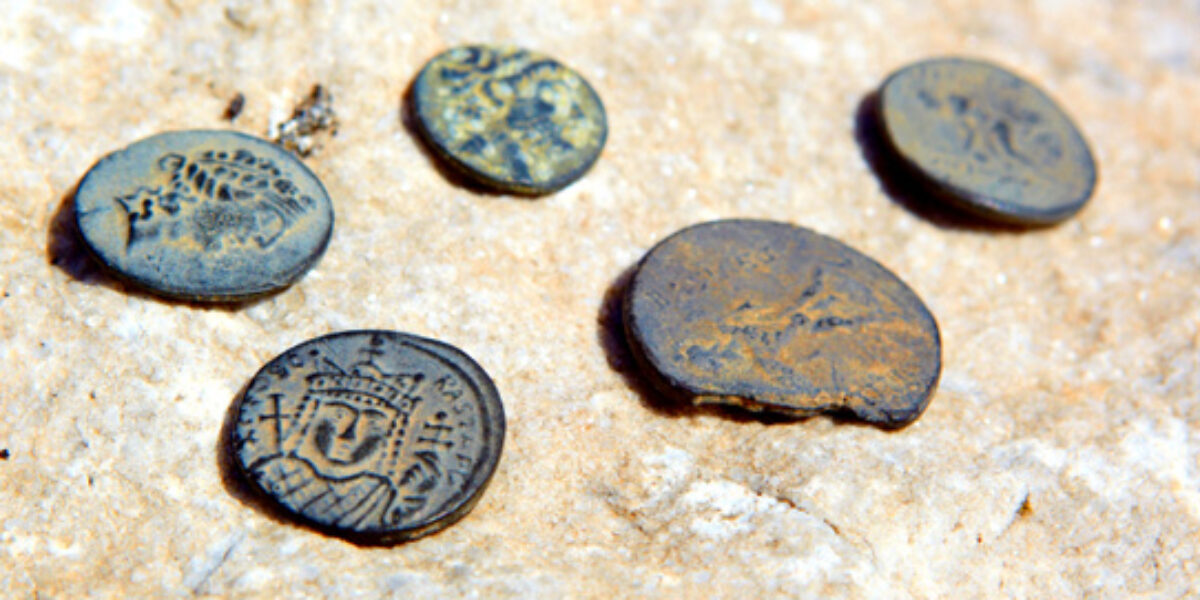The two silver coins in the parable of the Good Samaritan may be more than small details in the story. They are potential clues for understanding the kind of compassion exercised by the Good Samaritan.
Coins often play a role in stories about Jesus in the New Testament, and sometimes the coins take on a meaning that goes beyond their function as money. The thirty pieces of silver, for example, are for many people a memorable part of the story of Judas’ Betrayal of Jesus ([Matt 26.14‑16, Mark 14.10, Luke 22.3‑6, Zech 11.12, Exod 21.32). But the expression “thirty pieces of silver” has come down to us today as a kind of proverbial phrase for betrayal and greed. So, too, with the coin that Jesus asked for in the story about Paying Taxes to Caesar (Mark 12.13–17, Matt 22.15–22, Luke 20.20–26). For many readers that coin is inseparably bound up with a saying that is also part of the story, “Give to Caesar what is Caesar’s and to God what is God’s.”
And the coin that the widow gave to God in the story of A Widow’s Offering (Mark 12.41–44, Luke 21.1–4) has itself become a symbol for selfless generosity to God.
In the parable of the Good Samaritan (Luke 10.25–37), we also find coins mentioned. The Samaritan traveler who rescues an injured man gives an innkeeper two silver coins as a down payment on food, lodging, and care for the person he has helped (Luke 10.35).
For Luke, this down payment is part of a series of totally unexpected and kind acts that one stranger does to another stranger who is lying half-dead beside a road. Experts, however, are divided about the meaning and value of this down payment. Some think it amounted to enough money for two weeks’ care, which under any circumstances would be quite a gift. Others say that the coins provided care for two months—a gift of astonishing proportions from a stranger.
The two coins that the traveler gave the innkeeper were large silver coins that circulated in New Testament times. Luke calls these coins denaria, and they were minted at large imperial mints in the cities of Rome, Alexandria, and Antioch. In Jesus’ day a denarius amounted to the average daily wage of a worker. It was also the coin that Jews used to pay their annual temple tax.
Apart from coins like the denarius that came from the imperial mints, there were also coins that King Herod and his successors put into circulation from mints such as the ones in the towns of Tiberias, Jerusalem and Caesarea Maritima. The majority of these were small bronze coins of much less value than a silver denarius.
Local Roman officials also struck bronze coins from time to time. Some, like Pontius Pilate, used coinage as a kind of primitive propaganda for Rome and against Judaism by stamping images of Roman rulers on their coins. These images were bound to offend Jews for whom the use of such images amounted to idolatry.
The two silver coins in the parable of the Good Samaritan may well be more than small details in the story. They are potential clues for understanding the kind of compassion exercised by the Good Samaritan.




